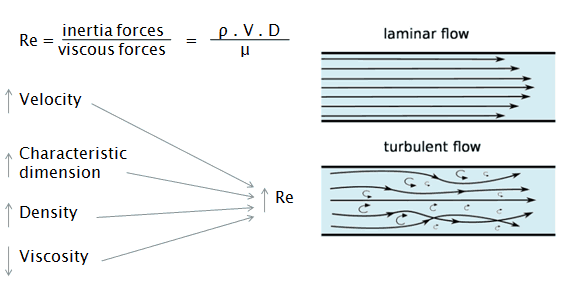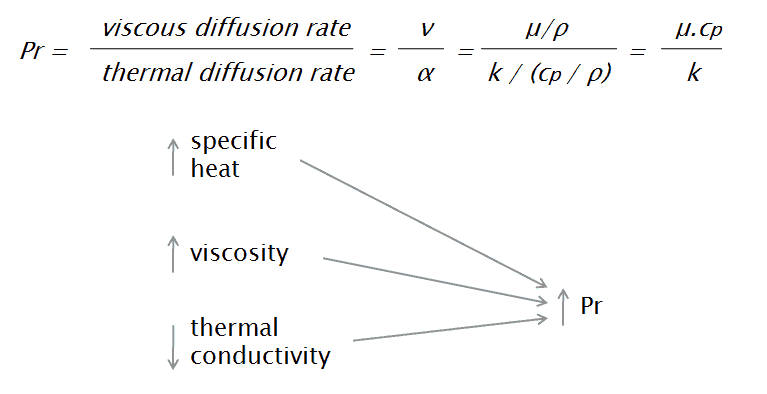Characteristic numbers can be used to compare a real situation (e.g., airflow around an airfoil and water flow in a pipe) with a small-scale model.
It is necessary to keep the important characteristic numbers the same. Names of these numbers were standardized in ISO 80000-11:2019, which gives name, symbol, and definition for 25 selected characteristic numbers used to describe transport phenomena.
For two flows to be similar, they must have the same geometry and equal Reynolds and Euler numbers. When comparing fluid behavior at corresponding points in a model and a full-scale flow, the following holds:
Remodel = Re
Eumodel = Eu
For example, let us compare Reynolds numbers of an actual vehicle and a half-scale model as shown in the following diagram. The Reynolds numbers of both agree when the velocity of the half-scale model is doubled. In this state, the proportions of both cases’ viscous force and inertia forces are equal; hence, the surrounding flows can be defined as similar.
This allows engineers to perform experiments with reduced scale models in water channels or wind tunnels and correlate the data to the actual flows, saving costs during experimentation and lab time. True dynamic similitude may require matching other dimensionless numbers, such as the Mach number used incompressible flows or the Froude number that governs open-channel flows.
Reynolds Number
The Reynolds number is the ratio of inertial forces to viscous forces and is a convenient parameter for predicting if a flow condition will be laminar or turbulent. It can be interpreted that when the viscous forces are dominant (slow flow, low Re), they are sufficient enough to keep all the fluid particles in line, then the flow is laminar. Even very low Re indicates viscous creeping motion, where inertia effects are negligible. When the inertial forces dominate over the viscous forces (when the fluid flows faster and Re is larger), the flow is turbulent.
It is a dimensionless number comprised of the physical characteristics of the flow. An increasing Reynolds number indicates increasing turbulence of flow.
where:
V is the flow velocity,
D is a characteristic linear dimension (traveled length of the fluid; hydraulic diameter etc.)
ρ fluid density (kg/m3),
μ dynamic viscosity (Pa.s),
ν kinematic viscosity (m2/s); ν = μ / ρ.
Prandtl Number
The Prandtl number is a dimensionless number, named after its inventor, a German engineer Ludwig Prandtl, who identified the boundary layer. The Prandtl number is defined as the ratio of momentum diffusivity to thermal diffusivity. The momentum diffusivity, or as it is normally called, kinematic viscosity, tells us the material’s resistance to shear-flows (different layers of the flow travel with different velocities due to, e.g., different speeds of adjacent walls) in relation to density. That is, the Prandtl number is given as:
where:
ν is momentum diffusivity (kinematic viscosity) [m2/s]
α is thermal diffusivity [m2/s]
μ is dynamic viscosity [N.s/m2]
k is thermal conductivity [W/m.K]
cp is specific heat [J/kg.K]
ρ is density [kg/m3]
Small values of the Prandtl number, Pr << 1, mean the thermal diffusivity dominates. Whereas with large values, Pr >> 1, the momentum diffusivity dominates the behavior. For example, the typical value for liquid mercury, about 0.025, indicates that heat conduction is more significant than convection, so thermal diffusivity is dominant. When Pr is small, the heat diffuses quickly compared to the velocity.
In comparison to the Reynolds number, the Prandtl number is not dependent on the geometry of an object involved in the problem but is dependent solely on the fluid and the fluid state. The Prandtl number is often found in property tables alongside other properties such as viscosity and thermal conductivity.
See also: Prandtl Number


